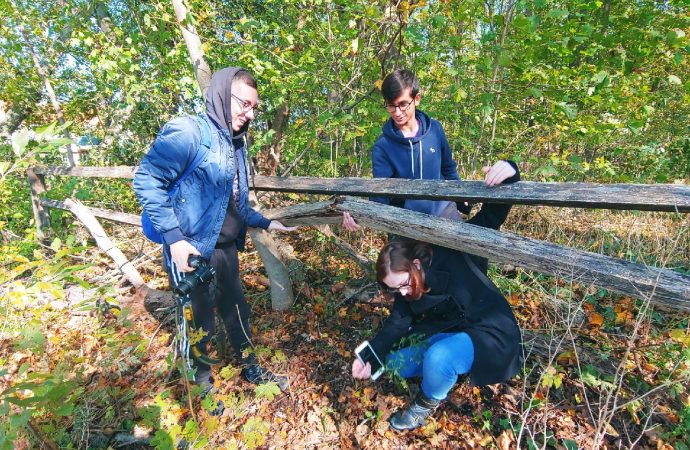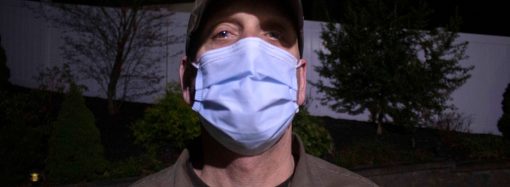Wilko Martinez-Cachero
Fall 2019 JRN 364

LONG ISLAND, NEW YORK – People walk past One North Mediterranean Soul in Jericho every day without realizing that the seafood restaurant was once the Maine Maid Inn, the home at the heart of a debate about whether an escape route for enslaved people ever existed on Long Island.
Efforts are increasingly being made to rewrite history, especially that pertaining to slavery, more accurately. The New York Times’ 1619 project is at the forefront of this movement, and museums around Long Island are also trying to change people’s perception of an often-misrepresented chapter in local history.
An alleged underground railroad could have presented a route to freedom for Long Island’s enslaved people, but local historians and experts are still struggling to determine whether or not it even existed.
In 2013, SUNY Old Westbury professor Kathleen Velsor published “The Underground Railroad on Long Island: Friends in Freedom,” a nearly 150-page book discussing the possibility of an underground railroad on the island.
The book claims that the underground railroad started around Hicks Street in Brooklyn, went east past Queens into Long Island, and then largely congregated around the Jericho and Westbury area. Stops also allegedly existed in Cold Spring Harbor, Oyster Bay and Huntington, where runaway enslaved people would cross the Long Island Sound into Connecticut and eventually escape to Canada.
Velsor’s book is the only widely distributed work pertaining to an underground railroad on Long Island, and she is steadfast in her belief that it existed. She points to the 173 footnotes in her book as proof that her research is rooted in fact, even though most footnotes lead to oral stories or self-described visuals.
“Nobody else has been able to put the story together, so that’s why I’m the expert,” she said.
Velsor’s book describes several alleged stops on the underground railroad—from the Jackson homesite in modern-day Wantagh to the Ketchum family farm and Jackson/Malcolm Home (of relation to the Wantagh Jacksons) in Jericho. These places were owned by Quakers, a group that led the abolitionist movement on Long Island.
Velsor’s book depicts Jericho as a vital cog on the underground railroad. She writes that many families in Jericho helped enslaved people to freedom. The area’s most notable stop was the Maine Maid Inn.
The Maine Maid Inn, which was awarded town landmark status, was the home of Valentine Hicks, a Quaker who was the son-in-law of Quaker and prominent anti-slavery activist Elias Hicks. A secret stairway behind a linen closet supposedly led to a hiding spot for runaway enslaved people, but not everyone believes that tale.
“Give me a break,” said Joysetta Pearse, the manager of the African American Museum of Nassau County. “They had cellars [to smuggle rum]. It wasn’t a secret place to hide slaves.”
Pearse said the closet was tested for DNA by a genealogist friend who did not detect any sub-Saharan African genes in the blood and sweat examined. She said shackles were found on the wall, something that would contradict both Quaker tradition and the perception that enslaved people were being hidden in the Maine Maid Inn.
Lynda Day, a professor of Africana studies at Brooklyn College, also questioned the shackles. “That didn’t automatically make sense to me,” Day said.
No explanation for the shackles has been found yet.
In the Media:
A version of this story aired on WSHU, Long Island’s National Public Radio affiliate station.
It also appeared in Newsday, Long Island’s only daily newspaper.
The problem with Long Island’s alleged underground railroad is that it is reliant on oral history. Documents are few—understandable given the circumstances under which people, mostly Quakers, would have housed runaway enslaved people—and Velsor’s book fails to provide definitive answers about the railroad.
But if the story of the underground railroad amounts to a prolonged campfire story between many generations, then how can we know what is true?
For instance, Velsor writes that the Jackson/Malcolm Home in Jericho is “believed to have maintained [the Jackson] family’s interest in supporting the freedom efforts of enslaved people,” while the Ketchum family farm allegedly housed runaway enslaved people.
However, Velsor points out that these arrangements were kept a secret and that not every member of the Jericho Quaker Meeting was aware of what was happening. It is impossible to conclude whether those sites in Jericho were stops on the possible underground railroad.
A February 2005 Newsday article claimed that safehouses on the underground railroad could have existed in the Three Village area, but there is no documentation proving the existence of those safehouses. Setalcott Indians purportedly passed down stories of helping enslaved people through the railroad, but again, those accounts are reliant on word of mouth.
“There’s secrecy involved with [the underground railroad], so it’s really hard as a historian to actually document it,” said Jennifer Anderson, an associate history professor at Stony Brook University writing a book on slavery. “It’s something that gets mythologized.”
David Rattray, editor of the East Hampton Star and leader of the Plain Sight Project which aims to uncover more about slavery on Long Island, agrees that tangible evidence is hard to find. Records about local escapees are sparse.
The opaqueness surrounding the underground railroad was further obscured after 1850 when the Fugitive Slave Act was passed. Enslaved people’s supposed paths to freedom were cocooned in mystery because they had to be.
“It [became] a federal crime to help a fugitive slave to do anything, so that’s when it really had to become secret,” Day said. “People were flouting the possibility of arrest by federal agents if they were involved in it.”
Connecting the dots and documenting the secret history of the alleged underground railroad 200 years later seems inconceivable.
“When people say, ‘My home was a stop on the underground railroad’… they were so secretive about it for obvious reasons that it’s like the spy network,” said Steve Boerner, archivist and president of the Cedar Swamp Historical Society in Old Brookville.
Experts also question the supposed stops and whether a pathway to liberty through Long Island would even make sense.
“Who the heck would get all the way up here from Virginia, get to New York City and turn around and come to Long Island?” Pearse said. “It would be a dumb move to make.”
There’s secrecy involved with [the underground railroad], so it’s really hard as a historian to actually document it. It’s something that gets mythologized.
Jennifer Anderson, SBU history professor
The Quakers could provide the answers—or even more questions—regarding the existence of a local underground railroad.
The underground railroad would have been composed of abolitionists offering hiding places for enslaved people. The Quakers fit that bill and their presence indicates the possibility of an underground railroad, although documentation is still lacking.
Anderson believes in the possibility of Quaker involvement but remains apprehensive.
“With the maritime setting and this really strong Quaker heritage, there are very strong suggestions, but it’s hard to say exactly like how formalized those things were,” she said.
Boerner, who gives historical tours around Long Island, believes it is tough to determine what is factual and what is legend about the underground railroad. However, he also thinks that the Quakers played an important role locally, a constant that is often brought up when discussing the underground railroad.
“[The Quakers] did make their houses available for the underground railroad,” Day said.
Velsor obtained a large amount of information for her book through her husband’s family, whose lineage can be traced back to the original Quakers on Long Island. She points to her Quaker connections in support of her work, but also believes those same connections are the cause of the skepticism she has faced.
“They wouldn’t publish my stuff because it was also about the Quakers, and people don’t like the Quakers, so this is why the story has been hidden,” Velsor said.
The Quakers have historically faced backlash because of their abolitionist stance and their general lack of involvement in the Civil War. However, even some Quakers are unable to distinguish lore from fact when it comes to the possible underground railroad on Long Island.
“I think to some extent, [the underground railroad] sounds romantic,” said Herb Lape, a member of the Westbury Quaker Meeting. “Why would you come to Long Island?”
Editor’s Note:
This printed edition of “Telling their stories” includes an article about St. David AME Zion Church that is a corrected, updated version of the original that appeared in Newsday on August 16, 2020.

